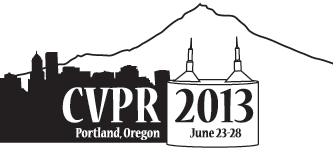-
Stereo Vision Algorithms for FPGAs
AbstractIn recent years, with the advent of cheap and accurate RGBD (RGB plus Depth) active sensors like the Microsoft Kinect and devices based on time-of-flight (ToF) technology, there has been increasing interest in 3D-based applications. At the same time, several effective improvements to passive stereo vision algorithms have been proposed in the literature. Despite these facts and the frequent deployment of stereo vision for many research activities, it is often perceived as a bulky and expensive technology not well suited to consumer applications. In this paper, we will review a subset of state-of-the-art stereo vision algorithms that have the potential to fit a target computing architecture based on low-cost field-programmable gate arrays (FPGAs), without additional external devices (e.g., FIFOs, DDR memories, etc.). Mapping these algorithms into a similar low-power, low-cost architecture would make RGBD sensors based on stereo vision suitable to a wider class of application scenarios currently not addressed by this technology.
Related Material
[pdf][bibtex]@InProceedings{Mattoccia_2013_CVPR_Workshops,
author = {Mattoccia, Stefano},
title = {Stereo Vision Algorithms for FPGAs},
booktitle = {Proceedings of the IEEE Conference on Computer Vision and Pattern Recognition (CVPR) Workshops},
month = {June},
year = {2013}
}
These CVPR 2013 workshop papers are the Open Access versions, provided by the Computer Vision Foundation.
Except for the watermark, they are identical to the accepted versions; the final published version of the proceedings is available on IEEE Xplore.
Except for the watermark, they are identical to the accepted versions; the final published version of the proceedings is available on IEEE Xplore.
This material is presented to ensure timely dissemination of scholarly and technical work.
Copyright and all rights therein are retained by authors or by other copyright holders.
All persons copying this information are expected to adhere to the terms and constraints invoked by each author's copyright.

